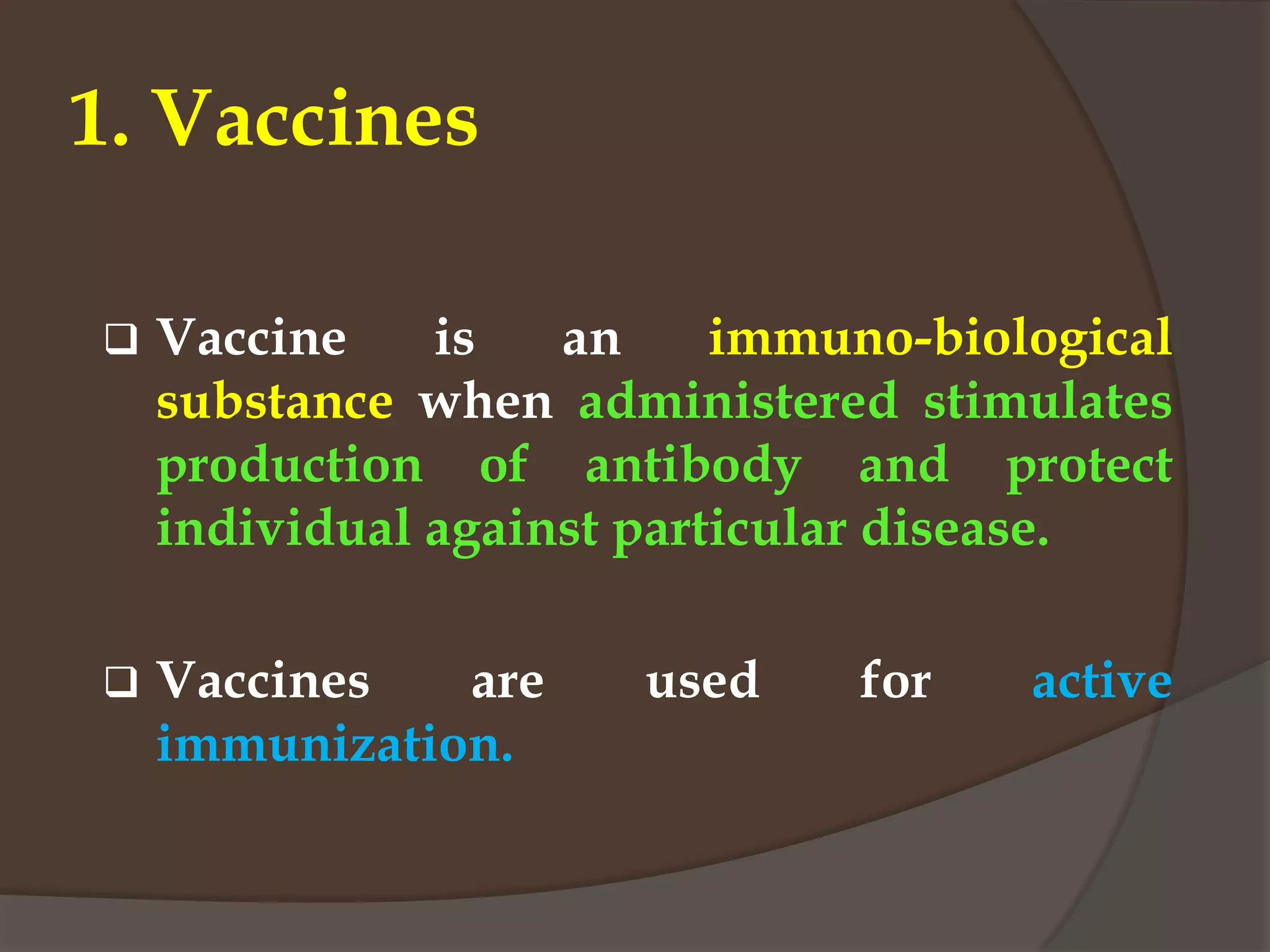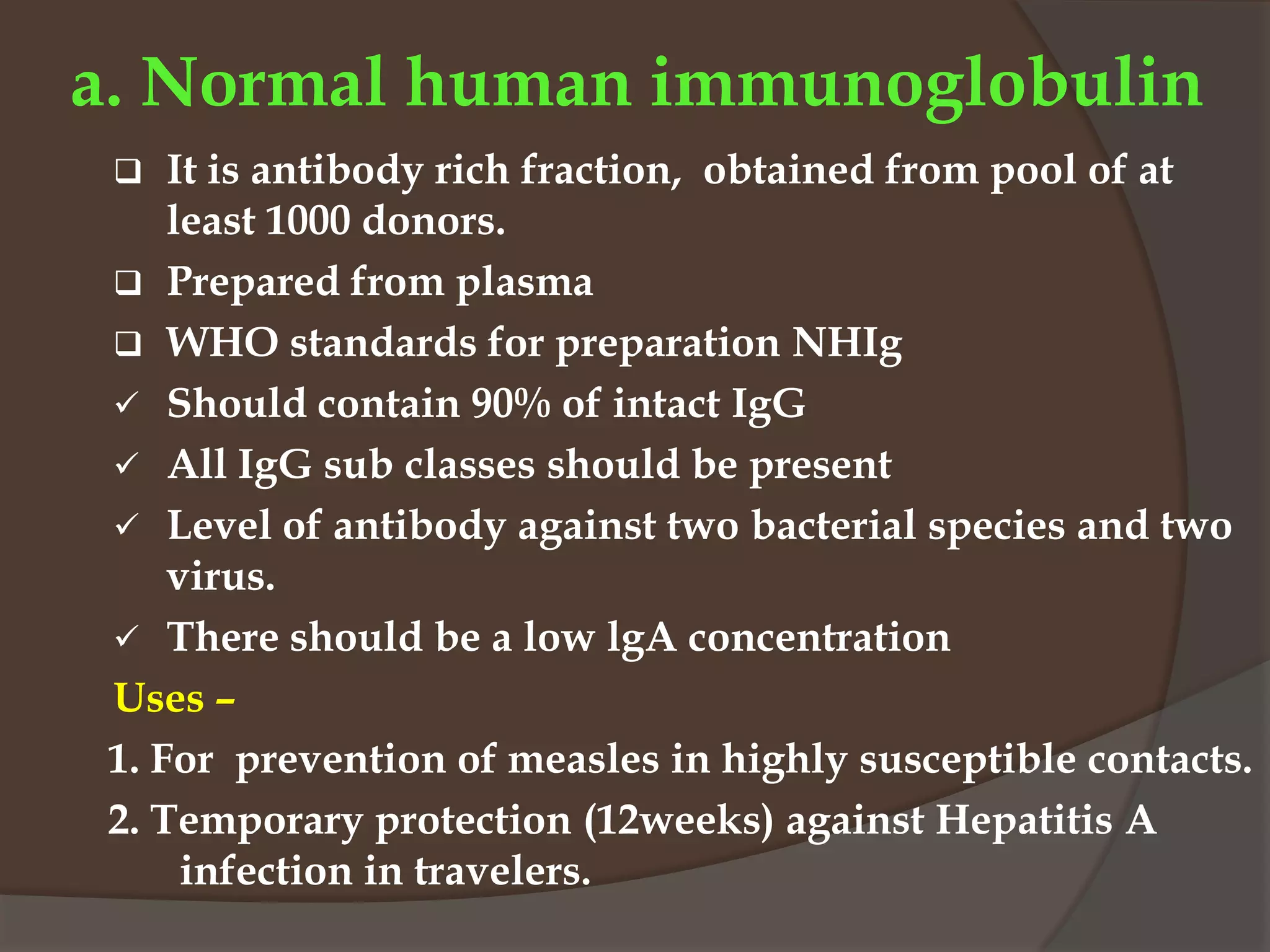The document discusses immunizing agents, categorizing them into vaccines, immunoglobulins, and antisera. It details various types of vaccines, including live, killed, and toxoids, along with their mechanisms, contraindications, and examples. Additionally, it explains immunoglobulins and their roles in passive immunity, as well as the use of antisera for specific infections.





























